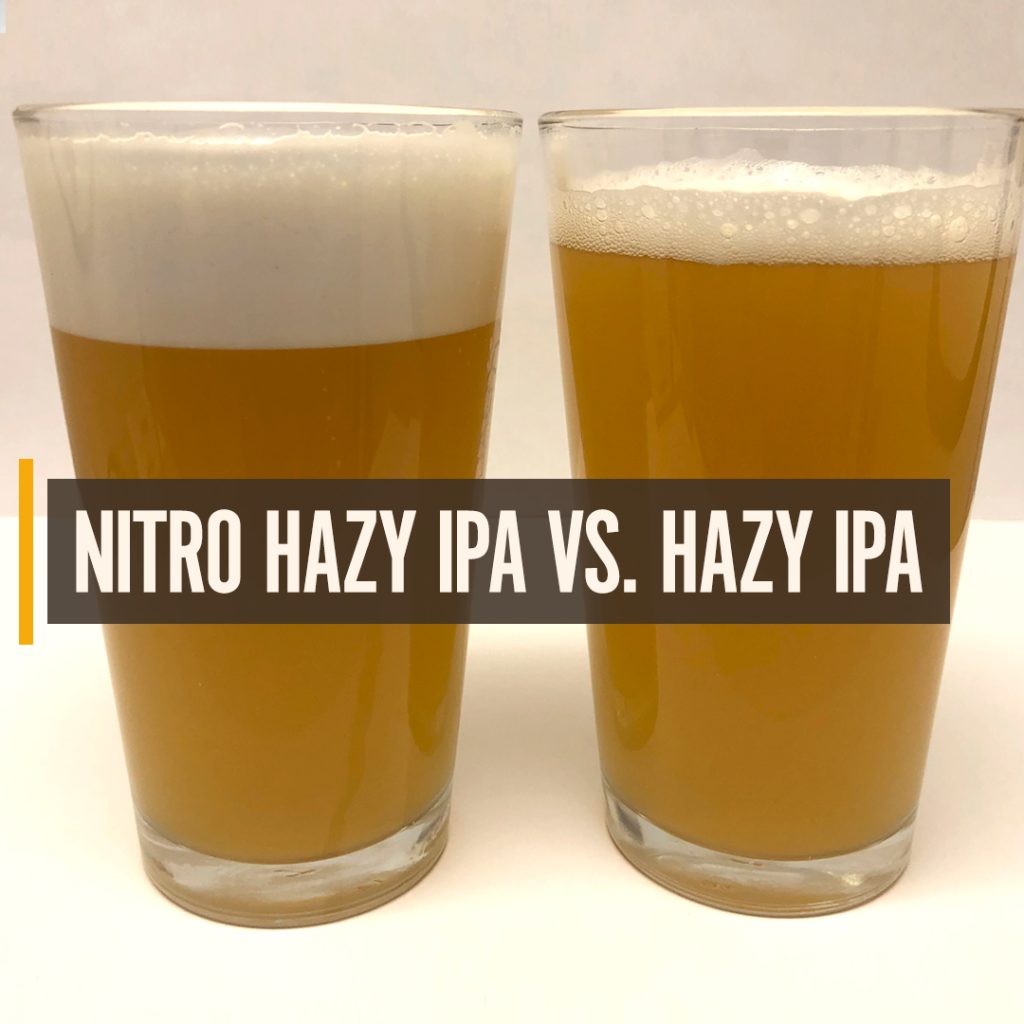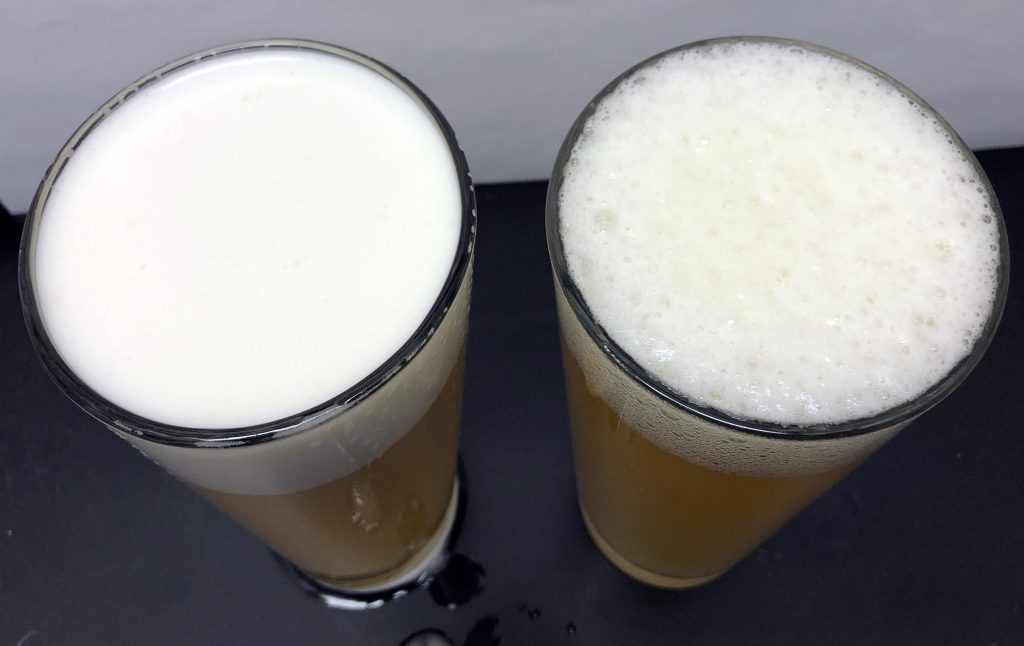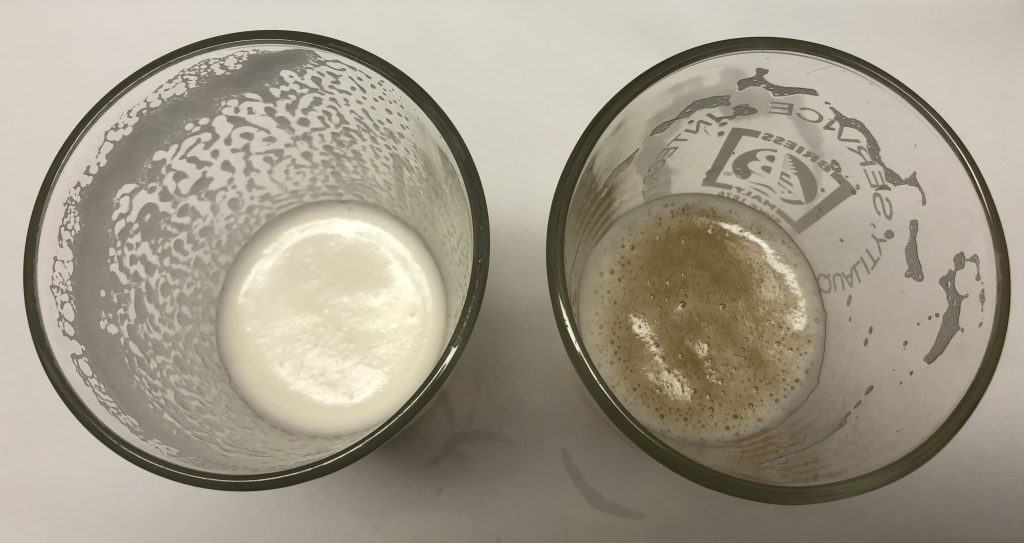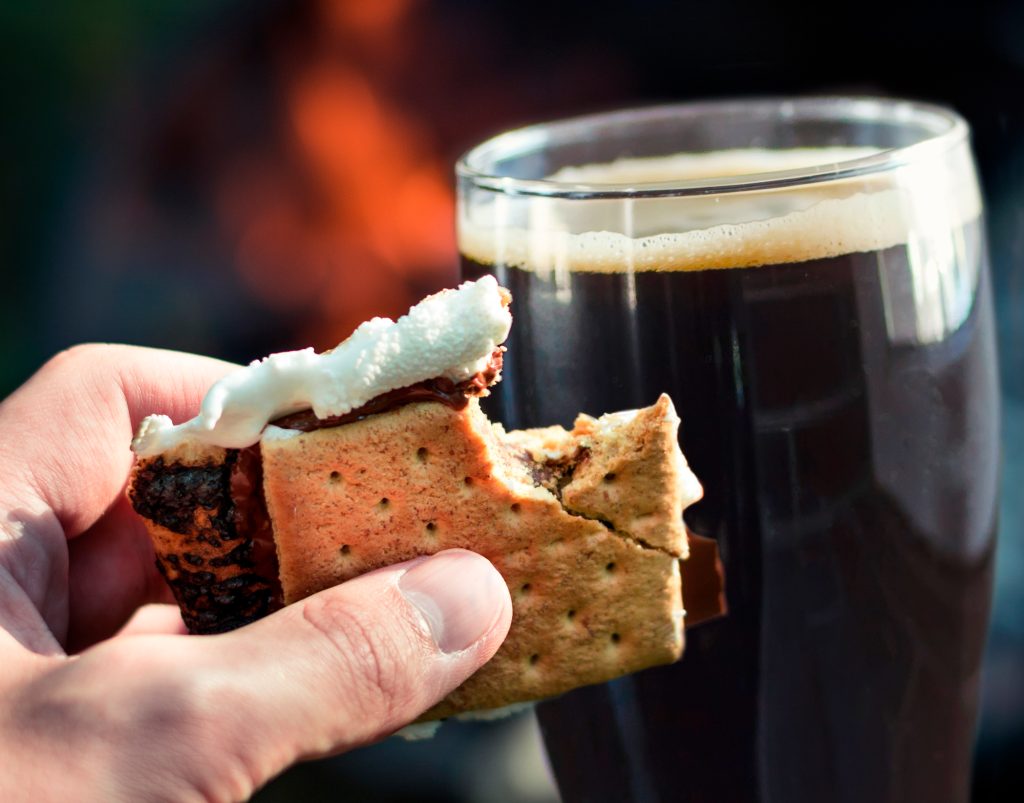Recently I got the chance to work with Nitrogenation for the first time. It was related to helping Dan Bies make a Nitro Stout for his most recent blog. I was curious how this fascinating process would affect other beer styles. A Nitro Hazy IPA initially seemed like a bad idea; interesting perhaps, but probably still bad. Can you remove the gas that accentuates hop flavors and aromas, replace it with a gas that does the complete opposite, and then expect the beer to be good?
Obviously, my curiosity got the better of me…

Visually the nitro hazy checked all the boxes of what a nitro beer should look like. Although the cascading bubbles were less prominent than what you would see in a darker beer, it was certainly unique to see in a hazy bright backdrop.
Upon tasting the beer, the first thing I noticed was how aromatic the foam was. The thick and creamy foam consisted of a slight bitterness and citrus notes that went quite well with the silky texture, giving a feeling it needed to be chewed rather than drunk. Once through the foam, the beer itself was smooth and creamy, tasting like a velvety citrus juice. The thick, slick mouthfeel was almost too much, but the slight bitterness lingered long enough to seemingly even things out.
I also brewed and carbonated a comparison beer with the traditional 2.8 volumes of CO2 so that I could really see and taste the differences.


Visually the beers are different. Even though the color of the beer is the same, the nitro version has a thick, dense foam with long head retention time and profound lacing. In contrast, the traditionally carbonated version has large bubbles, a short head, and little lacing.
Although both beers have the same aromas and tastes, each beer delivers a different experience. The nitro beer is creamy and more rounded, with muted flavors and aromas. The traditional CO2 beer is prickly on the tongue, sharp, and has more intense flavors and aromas.
Overall conclusion: While nitro beers are interesting, using nitrogenation doesn’t always make a beer better. Nitro tends to emphasize malt flavors but lessen hop flavors and aromas, which is not normally expected or desired in a Hazy IPA. I would say the Nitro Hazy was surprisingly drinkable and enjoyable. Side by side I still preferred the traditionally carbonated version. Some beers are just better with the crispness of CO2.
Below is the recipe so you can try it for yourself:
Nitro Hazy IPA Recipe
OG – 1.057
FG – 1.014
Grain:
- Briess Synergy Select Pilsen MaltGems® – 78%
- Briess Brewers Oat Flakes – 8%
- Briess Wheat Malt, White – 9%
- Briess Blonde RoastOat® Malt – 2%
- Briess American Honey Malt – 3%
Yeast:
- London Ale III
Hops:
- Cryo Citra
- Cryo Mosaic
Heat 18 gal of 20% tap water and 80% deionized/distilled water to 125°F. Mash in.
Ramp to 144°F, hold for 45 min.
Ramp to 157°F, hold for 30 min.
Mash off at 170°F. Transfer to lauter, sparge with 170°F deionized/distilled water.
Boil for 60 min.
Whirlpool and rapidly cool until temperature reaches 180°F, add whirlpool hops (85g of Citra and Mosaic). Rest for 10 minutes, then transfer.
Cool wort to <70°F.
Fermentation temp 64-74°F.
Add first dry hop (50g of Citra and Mosaic) to actively fermenting beer. First dry hop should start 18-24 hours from the beginning of fermentation. Then allow 24 hours for dry hopping to occur.
Add second dry hop (50g of Citra and Mosaic); 1 Plato from Finished Gravity, about 1.018-. (24 hours Dry Hop)
After reaching FG, transfer to secondary storage and allow 5-7 days at 45°F before bottling.
Finishing:
Both beers are finished by transferring them to a keg and agitating (rolling and shaking) the keg to reach equilibrium.
Traditional beer was carbonated to 2.8 volumes of CO2 and served through a traditional faucet.
Nitro beer was nitrogenated using a 70/30 blend (%Nitrogen/%CO2) and violently agitating (nitrogen is very difficult to get into solution) a 40°F keg at 40 psi. It was dispensed through a faucet with a “sparkler” to achieve the nitro effect.


